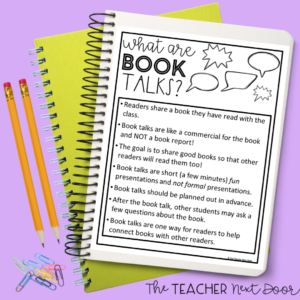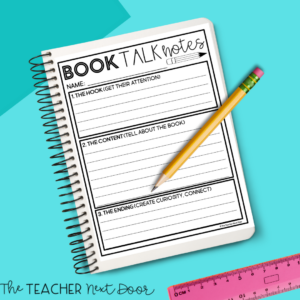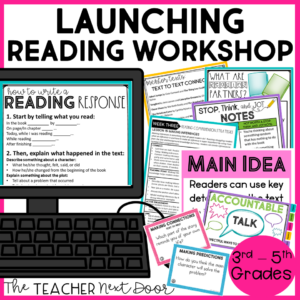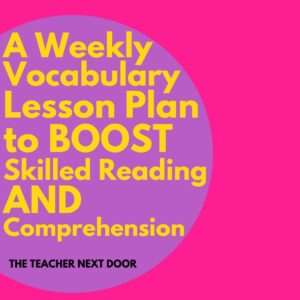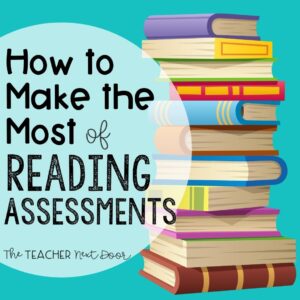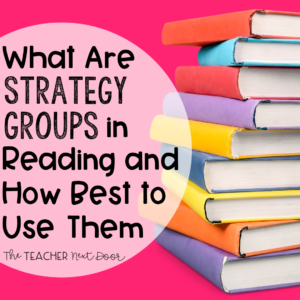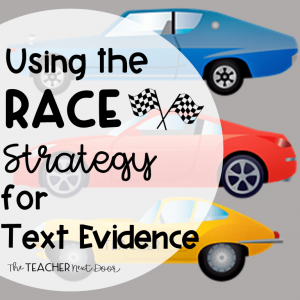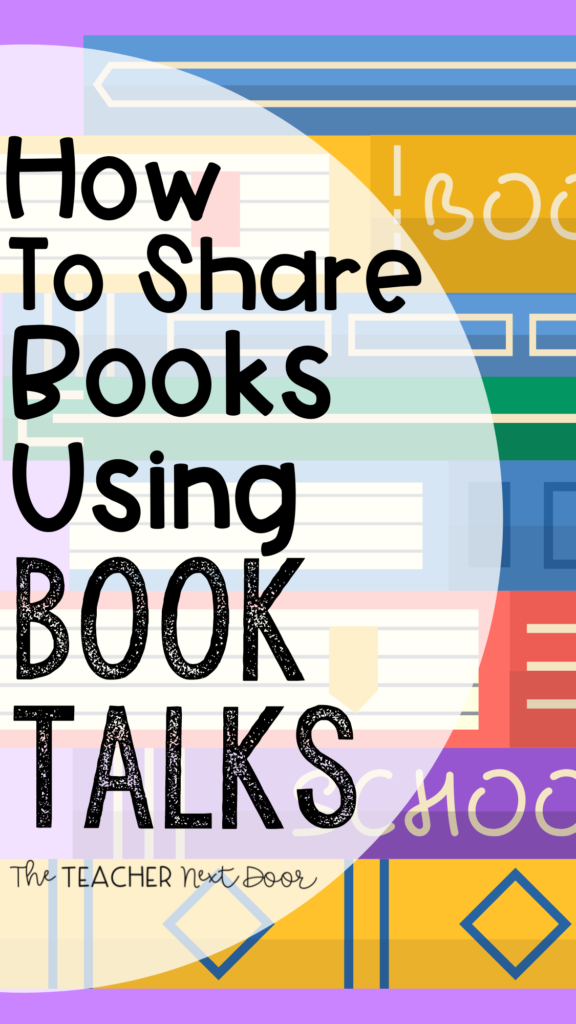
If you’ve ever wondered how to share books using book talks, you’re in the right place!
Book Talks are an effective way to get students excited about books!
Let’s start with the basics.
What is a book talk?
- A short (1 – 2 minutes), mini-advertisement to try to generate interest in reading a particular book
- Can be presented by students and teachers
- Works well during Reading Workshop or for any reading instruction model
What are the benefits of book talks?
- Encourages students to read a variety of books
- Supports speaking and listening skills
- Promotes a culture of reading
- Motivates students to find and read fun books
How do you teach students to share books using book talks?
Start by teaching Book Talks by example! First, I choose a book that may be new to most of my students and share it with the class using a Book Talk.
I make sure to share the book enthusiastically, modeling what I want students to include in their own presentations.
Then I teach the specific information about giving a Book Talk using several mini-lessons. In fact, it’s one of the first mini-lessons after launching Reading Workshop.
Anchor charts are great to use! I teach three mini-lessons. What a Book Talk is (pictured above), Dos and Don’ts for Book Talks, and the three main parts of a Book Talk (the hook, the content, and the ending).
Each day, I continue to give a short Book Talk, making sure to vary it. This helps students see that Book Talks don’t have to look or sound exactly the same.
After seeing a few examples, we go over the template that has the three parts of a book talk.
I also show students the sign-up sheet and go over the rules for signing up. For example, you can only sign-up IF you’ve completed reading a book AND it’s one that you love.
What are the three main parts of a Book Talk?
1. The Hook
The Hook is the introduction and can be compared to a topic sentence. It’s sole purpose is to get the audience’s attention.
Here are a few ways to introduce a book:
- Ask a question
- Read an exciting line from the book
- Share an interesting fact
- Make a surprising statement
- Your own creative idea
I like to have a small stack of books ready for this lesson. I also make quick notes for myself of what I want to say for each.
To model each of the hooks. I hold up a book and demonstrate one of the hooks. I try to make this as entertaining an enthusiastic as possible.
2. The Content
In this part, students tell what the book was about. First, they tell the author’s name and the title. They show the actual book to their classmates too.
Then they give a short summary of the book. We use the familiar summary of a plot template as a starting place idea:
A. “Somebody” (main character)
B. “Wanted” (what did they want or try to do)
C. “But” (what was the problem)…
D. Don’t tell the “So” or the “Then” parts (no giving away the ending)
We discuss how to include this information without making it into a single sentence using those key words.
To do this, I take a well-known book, usually a read aloud we’ve read together, and model this idea.
First, I model a bad example of sharing about a book using the SWBST template. Then, I model how to naturally and enthusiastically tell about the book while still including these ideas.
Additionally, you’ll want to make sure to stress the NO SPOLIERS policy! A good Book Talk NEVER gives away the ending.
3. The Ending
To wrap up it up, students should create curiosity about the book. One way to do this is to tell about an exciting part to make classmates curious without giving away the ending.
Another way to end the presentation is what I call the Reading Rainbow closing! If you’re a fan of Reading Rainbow, you know there’s always a phrase like “If you like books with/about _____, you might like (title of the book)!
Again, you’ll want to stress the idea that being creative and doing things a little differently is encouraged!
What are some Book Talk tips to share with students? Make sure to:
- Share a book you’ve read and enjoyed
- Be creative! This is a performance, not a book report!
- Don’t “tell” about the book, but “sell” it!
- Use a strong voice so everyone can hear
- Use eye contact (if possible)
- Practice the presentation a few times at home
- Keep it short and sweet at 1 – 2 minutes!
How can you find time to do Book Talks?
My favorite time to do Book Talks is during Share Time in Reading Workshop.
If you feel like your Reading Workshop time or reading block is already stretched for time, here are a few alternatives:
- After morning work
- Transition times – before recess or lunch
- If the class completes an assignment faster than expected
- Snack time
- After students pack up for the day
Book Talks are a powerful motivating tool to get students excited about reading! By adding Book Talks into your classroom, you’re introducing students to lots of new books to read. And these peer recommendations can be powerful! The bonus is that you’ll most likely be amazed by how much students enjoy sharing books with each other!
That’s it! Now you know all about how to share books using Book Talks!
Do remember teaching students to give organized presentations (and teaching reading in general) is always a work in progress.
It will take a lot of time and practice to fine tune this reading activity.
The more you practice teaching and organizing Book Talks with your students, the more confident and skilled you’ll become!
Want more teaching tools? If you’re looking for a set of time-saving, print and digital resources, I have a set ready for you. It has everything you need to teach book talks plus anchor charts, graphic organizers, reader’s notebook materials, 4 weeks of lesson plans, bookmarks, posters, and more!
Click here to take a look at the Launching Reading Workshop unit!
Now that you have a handle on book talks, maybe you’re wondering where you go from here?
If you’d like to plan out the grade level reading skills your students need for the year, I have a FREE set of pacing guides for 3rd, 4th, and 5th grades that I’d love to share with you.
The pacing guides are organized by weeks and come in color, black and white, and in editable formats too, so you can tweak them to match your needs.
Looking for more Reading Workshop Ideas?
- Ways to Add Accountability in the Reading Workshop Model
- Everything You Need to Know About Launching Reading Workshop


